Scan QRCode

After driving a "mixed brand" electric vehicle for a period of time and experiencing an exclusive charging station, I felt a sense of emotion.
Why do all new power brands need to build their own brand exclusive charging stations?
Before coming into contact with pure electric vehicles, whenever I saw Tesla's super charging station in public areas such as shopping malls and hotels, I always had this question in my heart.
At that time, Tesla's super charging stations, which had just begun to expand their territory, were mostly located in the C spaces of these public parking lots. Seeing that they occupied the core areas but had few parking spaces, it was truly absurd. Especially when parking spaces are very tight.
Moreover, as the wave of electrification rapidly advances, more and more "colorful" new electric poles and various car brand logos are appearing in these parking lots. These new energy vehicle brands' land occupation is king ', constantly dividing these public parking lots into exclusive' private territories' one by one.
Why can't they share them so that they can use the fewest parking spaces to solve the charging problem for the most users? "Although from a moral and regulatory perspective, charging parking spaces cannot solve the problem of tight parking spaces, reasonable allocation of charging parking spaces can also fundamentally improve the turnover efficiency of parking spaces.
Exclusive charging station is a service
Interestingly, after driving a pure electric vehicle for a period of time, such doubts were quickly dispelled.
Obviously, an exclusive charging station is a manifestation of brand service. Every time I drive this brand new pure electric vehicle from a traditional joint venture brand to charge, I can't help but feel envious when I see Tesla and Xiaopeng's super charging stations next to me.
Especially when the public charging station is "full", looking at the empty charging station next to it makes one's nose even more sore. More importantly, these brands' fast charging stations are also more stylish in terms of decoration than public charging stations, often with brighter ceiling lights and cleaner floors, making people feel different in temperament.
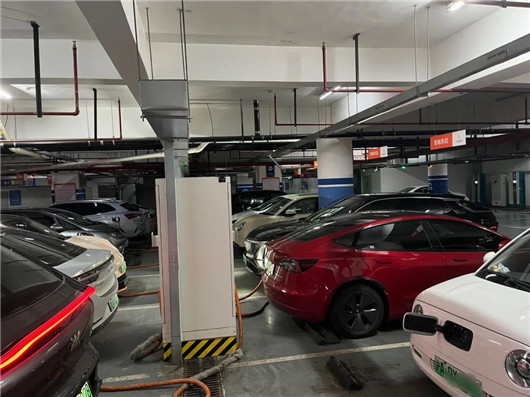
With this comparison, these brand exclusive overcharging stations give car owners a sense of nobility during the charging process. Not only is it exclusive to the brand, but there are few instances of waiting, much like diners holding VVIP VIP cards to dine.
Therefore, the number of overcharging stations has become a manifestation of the strength of various new energy vehicle companies, and frequently appears as core information in the brand's introduction column. Taking several car companies in the top tier as examples, as of May this year, Tesla has over 5000 super charging stations worldwide and over 1600 in China, covering not only all provincial capitals and municipalities, but also many prefecture level cities.
In terms of the well-known "Weixiaoli", the three companies currently adopt different energy supply structures and have different construction schedules for exclusive overcharging stations.

According to official information from various sources, as of March 1 this year, Xiaopeng has put into use 1948 charging stations, including 816 self operated overcharging stations and 202 destination stations; As of June 1st, NIO, which focuses on battery swapping, has also built 2645 charging stations, including 1404 overcharging stations. On the other hand, currently only plug-in hybrid models are ideal, and 25 super charging stations have been built.
Why is there no dedicated gas station?
Nowadays, various car companies seem to be engaged in an "arms race" in the construction of charging stations. In addition to new forces, traditional luxury brands such as Mercedes Benz, Porsche, and Lutz are also promoting the construction speed of brand overcharging stations.
In addition, in terms of coverage, various brands' overcharge stations are constantly growing recklessly on the Chinese territory. As long as you are willing, driving a pure electric vehicle can even reach the base camp of Mount Everest, and among them, Jikron has built the closest charging station to Mount Everest, highlighting a "wayward" attitude.

In fact, there is another reason for not understanding exclusive charging stations, which is from the perspective of using gasoline vehicles, why there is no brand specific gas station?
Although, from the perspective of energy security, the oil industry will not tilt too much towards private capital like other industries. However, considering that there are still many private gas stations on the market, there seems to be no car brand that will "collaborate" with oil companies such as PetroChina or Sinopec to launch brand specific gas stations, allowing car owners to feel the unique and noble service.
Essentially, it's because any brand or car has the same fuel nozzle size, the same fuel gun, and the same refueling speed. From this perspective, why bother building your own brand's exclusive gas station while excluding other brands' models.
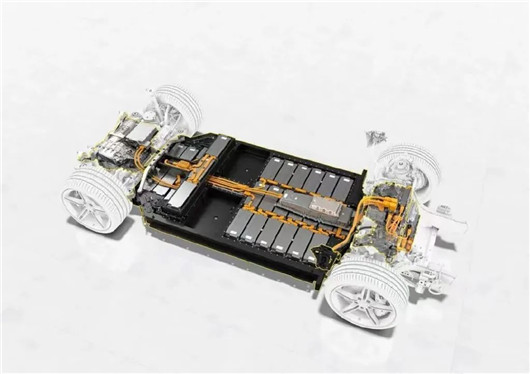
In contrast, pure electric vehicles in the current market have different charging efficiency due to different brands of models being built based on different electrical architectures. When pure electric vehicles evolve from a 400V electrical architecture to a 600V, and then to an 800V electrical architecture, it is difficult to maximize charging efficiency without using their own fast charging or overcharging stations.
Exclusive services are expanding
In the Chinese new energy market, even though the maximum voltage required by different models and the charging power of different charging stations are different, it is still possible to achieve the sharing of charging stations. Because there are relatively detailed national standards regarding the charging of new energy vehicles.
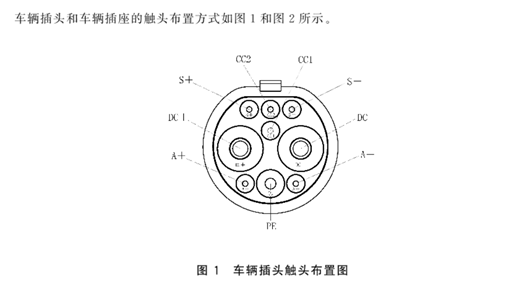
For example, there are standards for charging interfaces. The charging interface standards for new energy vehicles in China are detailed in GB/T 20234-2015 "Connection Devices for Conduction Charging of Electric Vehicles", which respectively specify the AC charging interface and DC charging interface in Parts 2 and 3. A standardized charging interface enables different brands of electric vehicles to charge on the same charging station.
Moreover, in national standards such as GB/T 18487.1-2015, GB/T 27930-2015, and GB/T 20234.3-2015, detailed provisions have been made for charging station standards, charging service standards, and charging safety standards, aiming to improve charging efficiency and the safety and convenience of new energy vehicle charging.
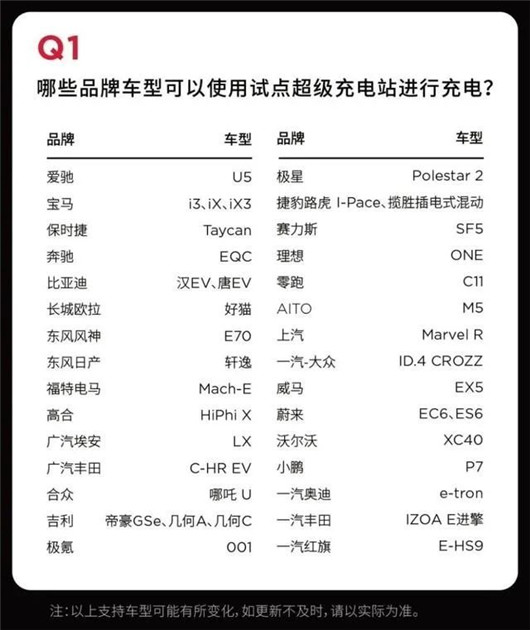
In fact, with the continuous expansion of the market base, many brands have now opened their own overcharging stations. In April, Tesla announced the pilot opening of 10 overcharging stations and 120 destination charging stations in Chinese Mainland to provide charging services for 37 non Tesla models. Among the first batch of models, mainstream models such as BYD Han EV/Tang EV, NIO ES6/EC6 were included.
In addition to its "shared services" in the Chinese market, Tesla has also opened North American charging stations to Ford.
Next spring, owners of Ford E-Transit, EV Mustang Mach-E, and F-150 Lightning can share 17711 supercharges with Tesla in North America. However, unlike the unified standards in the Chinese market, Ford pure electric vehicle models currently use the CCS standard. Therefore, starting from 2024 when connecting to Tesla's overcharging network, Ford car owners need to install an adapter with the NACS standard port used by Tesla.
In the new power of car manufacturing, NIO has already opened its exclusive charging stations to other brands. Previously, NIO released data stating that 76% of NIO's charging stations served non NIO brands during this year's Spring Festival. It can be seen that exclusive brand charging stations are also providing cross brand charging services and gradually becoming a trend.
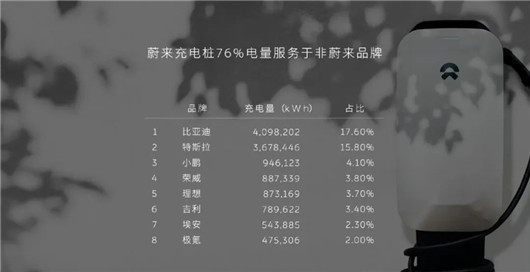
Of course, the "required course" for buying new energy vehicles is to install a household charging station. However, there are always some people who are unable to achieve this goal due to the limitations of driving conditions. Moreover, there is always a portion of the usage cycle of pure electric vehicles that requires external energy replenishment, so public charging stations are a necessary part to deal with.
Anxiety without a sense of exclusivity
In the urban energy replenishment system, in addition to the dedicated charging stations of these new energy brands and the charging stations constructed by the State Grid, there are also many suppliers from different sources.
One of the most inconvenient aspects is that these suppliers all need to access different apps or mini programs to use them during charging. So many "miscellaneous" electric vehicle users like me have as many as seven or eight small programs related to charging on their phones, each time matching them one by one like holding a large key to unlock.
What's even more frustrating is that many third-party charging stations do not require a "pay as you go" method, but require a pre paid amount to be used. However, each time the pre deposit amount is not exactly used up, and over time, there are "deposits" left in many small programs, making it truly a "nouveau riche" who has money everywhere.
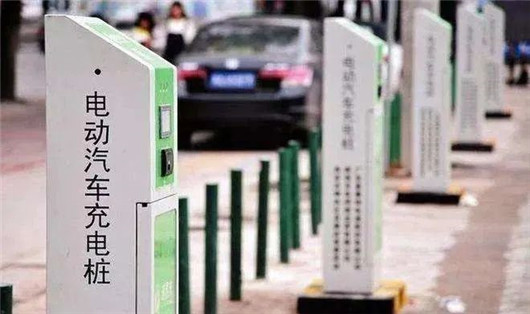
Throughout the country, as of the end of 2022, China has built the world's largest charging infrastructure system, including 5.21 million charging stations, with the largest number, largest radiation area, and most comprehensive service vehicles. Among them, there are 1.797 million public charging stations, including 761000 DC charging stations and 1.036 million AC charging stations, and 3.413 million private charging stations.
At the same time, the number of new energy vehicles in China is about 13.1 million, more than half of the global total, and the overall vehicle to pile ratio is about 2.5:1, which is far from reaching the ideal ratio. Moreover, the issue of insufficient charging facilities remains a major bottleneck affecting the use of new energy vehicles, particularly in rural areas.
Compared to gasoline or diesel, the construction of the fuel supplement system for gasoline or diesel vehicles has been developing for over a hundred years since the birth of automobiles. Therefore, it is clearly superior in terms of scale and quantity, fully meeting the huge user base of today's gasoline vehicles. This also dispels my previous doubts about the type comparison issue of exclusive gas stations from another perspective.
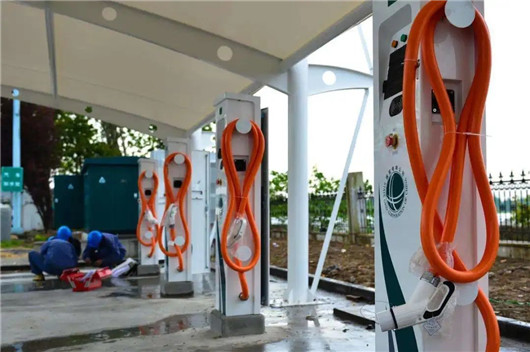
Compared to gas stations, the construction of the new energy vehicle energy replenishment system is still in the initial stage, and it has only been in recent years that consumers can feel significant progress and development. Therefore, it is definitely difficult to compare the construction of the service system with gasoline vehicles.
Because of this, in China, which has a vast territory and a large population, it is difficult to quickly promote the orderly construction of charging stations relying solely on the country's own efforts. It is even more necessary to include multiple forces from new energy vehicle companies and suppliers to work together and strive together. Moreover, enterprises such as State Grid Corporation of China, which focuses on infrastructure construction, find it difficult to allocate effective human resources to maintain charging stations nationwide, which is also an advantage for other suppliers to participate.
But the new issue is whether, with the emergence of more and more different suppliers, there can be a unified management enterprise that effectively manages and reasonably schedules charging stations of various brands. There will no longer be an awkward situation where public charging stations like State Grid queue up, while nearby overcharging stations such as Tesla and Xiaopeng are empty.
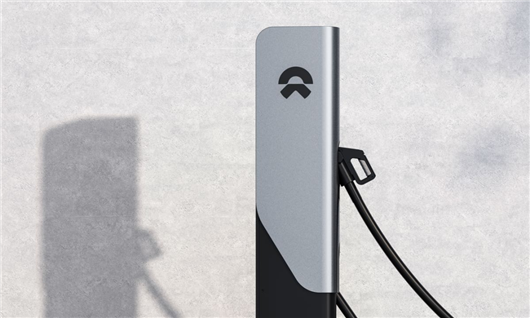
But then again, those brands that choose to build their own exclusive charging stations are spending real money and silver. These advantages accumulated in the construction of the energy supplement system should become a bonus for consumers when choosing cars. Why should these slow moving brands be allowed to enjoy themselves. It's like the experimental data carefully researched by top students being randomly copied by poor students.
Perhaps, based on overall awareness, some people may say that in order to promote the progress of the entire charging and energy supplement system, these "top students" should also open exclusive charging stations to other consumers, so as to make the energy supplement system more perfect. Similarly, in the current immature system, it is appropriate for users without dedicated charging stations to feel anxious.
AMS2024 Exhibition Guide | Comprehensive Exhibition Guide, Don't Miss the Exciting Events Online and Offline
Notice on Holding the Rui'an Promotion Conference for the 2025 China (Rui'an) International Automobile and Motorcycle Parts Exhibition
On September 5th, we invite you to join us at the Wenzhou Auto Parts Exhibition on a journey to trace the origin of the Auto Parts City, as per the invitation from the purchaser!
Hot Booking | AAPEX 2024- Professional Exhibition Channel for Entering the North American Auto Parts Market
The wind is just right, Qianchuan Hui! Looking forward to working with you at the 2024 Wenzhou Auto Parts Exhibition and composing a new chapter!
Live up to Shaohua | Wenzhou Auto Parts Exhibition, these wonderful moments are worth remembering!
Free support line!
Email Support!
Working Days/Hours!





